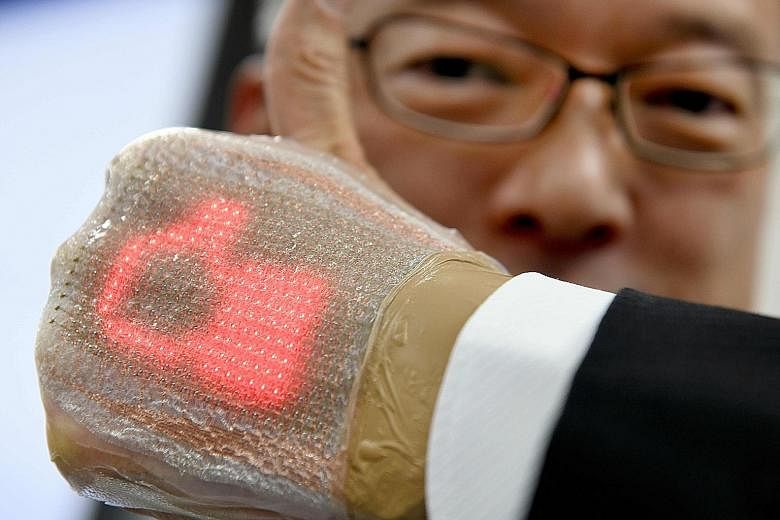TOKYO • Palm reading could take on a whole new meaning, thanks to a new invention from Japan: an ultra-thin display and monitor that can be stuck directly to the body.
The plaster-like device is only 1mm thick and can monitor important health data as well as send and receive messages, including emojis.
University of Tokyo's Professor Takao Someya, who developed the device, envisions it as a boon for medical professionals with patients who live in faraway places, as well as family living far from their relatives.
"With this, even in homecare settings, you can achieve seamless sharing of medical data with doctors, who would then be able to reply to their patients," he said.
Slapped onto the palm or back of a hand, it could flash reminders to patients to take their medicine and allow grandchildren to communicate with their grandparents living far away.
"The device displays on your skin and you would feel as if it is part of your body. When you have messages sent to your hand, you would feel an emotional closeness to the sender," Prof Someya said. "I think a grandfather who receives a message that says 'I love you' from his grandchild would feel the warmth."
The invention could prove particularly useful in Japan, with its rapidly-ageing population, replacing the need for in-person checks by offering continuous, non-invasive monitoring of the sick and frail, said Prof Someya.
The display consists of a 16-by-24 array of micro LEDs and stretchable wiring mounted on a rubber sheet.
It also incorporates a lightweight sensor composed of a breathable "nanomesh" electrode and a wireless communication module.
"Because this device can stretch, we can now paste a display on things with complex shapes, such as skin," Prof Someya said.
It can be placed on the human body for a week without causing skin inflammation and is light enough that users might forget they are wearing it.
Along with medical applications, Prof Someya hopes the device could lead to wearable displays for joggers to monitor heart rates or check running routes.
He imagines labourers using the displays to consult manuals on their arms while working.
The device was created by Prof Someya in partnership with Japanese printing giant Dai Nippon Printing, which hopes to put it on the market within three years.
AGENCE FRANCE-PRESSE

